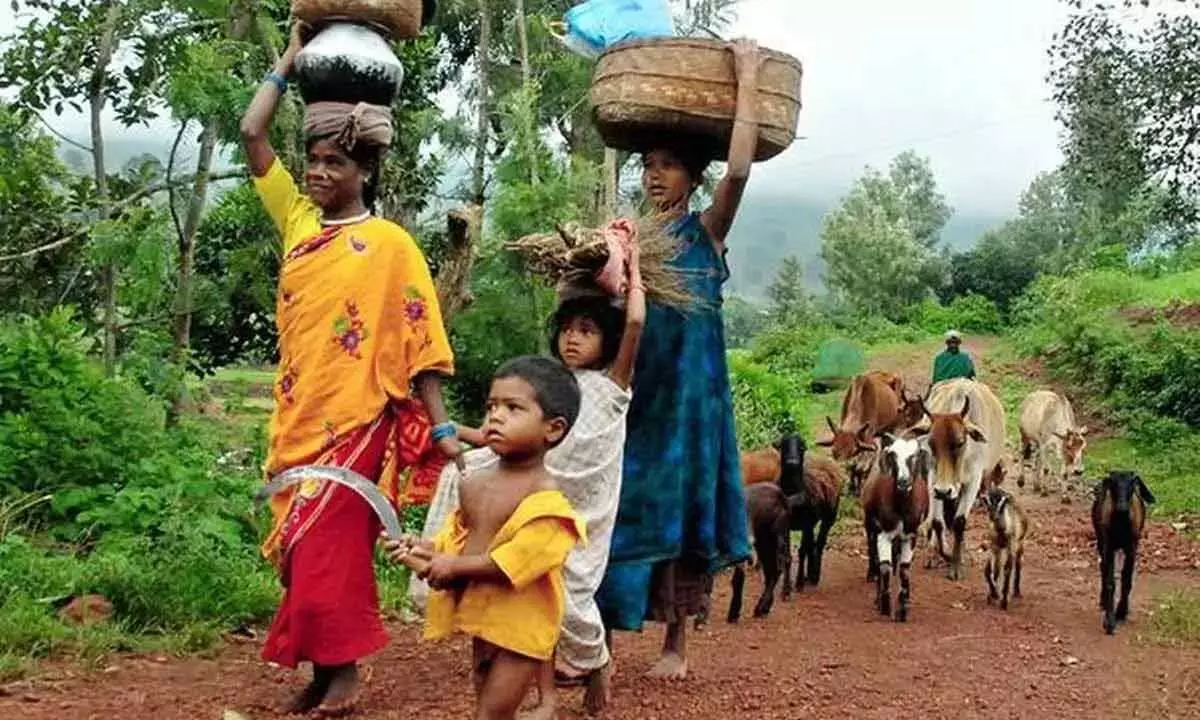Live
- Union Minister tenders apology for remarks on Justice D’Cunha
- Indian value systems withstood many onslaughts: TG Guv
- Golden Chariot luxury train to resume operations from Dec 14
- Jain monk Shri 108 Jnaneshwar Muni attains samadhi at Devlapur
- Home minister flags off sports tournament of journalists
- Collector reviews development, welfare programmes in Kalasapadu mandal
- Run for men’s health issues on Nov 23, 24
- Quick commerce workforce expansion to surge by 60 pc in India
- State on the brink of a public uprising over Waqf issue, says BJP
- Dr Soumya Swaminathan to talk on TB, COVID at UoH on Nov 25
Just In
Ease burden of diseases in tribal lands


Representational image
Health is a function, not only of medical care but of the overall integrated development of society – cultural, economic, education, social and political – it is said.
Health is a function, not only of medical care but of the overall integrated development of society – cultural, economic, education, social and political – it is said. However, when it comes to the tribal populations in our country, we forget that the common beliefs, customs and practices connected with health and disease have been found to be intimately related to the treatment of disease.
It is necessary to make a holistic view of all the cultural dimensions of the health of a tribal community. In most of these communities, there is a wealth of folklore related to health. Serious studies related to tribal lives and development have always pointed out that if the priority is to provide healthcare to the tribals, then their belief systems and cultural practices should be followed closely and an interlinking of medicare with those should be developed for excellent results. Trying to educate the tribals first leads to a precarious situation in providing health care. This aspect requires a delinking from other programmes and evolved with care to convince the tribals to accept modern medication.
Documentation of this folklore available in different socio-cultural systems may be very rewarding and could provide a model for appropriate health and sanitary practices in a given ecosystem, latest surveys tell us. Maternal and child care is an important aspect of health seeking behavior which is largely neglected among the tribal groups. The reports also suggest that there exists a definite nexus between forests and nutrition. It has been noted by many that the tribals living in remote areas have a better overall status and eat a more balanced diet than tribals living in less remote, forest free areas. These people have suffered from high rates of displacement.
Scheduled tribes make up 8% of the total population and constitute 55% of displaced people. This has had a serious effect on the overall development of these communities, particularly tribal children. Such a large population resides in hills and jungles and other inaccessible areas. While some of the communities are in large numbers as in the case of Gonds, Bhils, Santhals, Orans, and Khonds etc., there are a few tribal communities whose population is below one thousand as in the case of Andamans, Jorwas, Onges, and Sentinelis. Due to their isolation from the rest of the Indian population, they are in an utter backward stage with primitive technology, abject poverty, illiteracy, and ignorance.
All these people could be lifted up from these conditions with ease if a sincere effort is made. But, when it comes to their health, a greater care should be adopted, the reports suggest. Prior to the advent of the British in India they were virtually left alone by the earlier rulers in ancient and medieval rulers and others since they considered administering these areas as unremunerative. Even the latest Tribal Ministry report suggests that healthwise most of the hamlets inhabited by them suffer a lot in the country and most of us will not even be aware of the extent of these problems as our media has little or no space for them. If Sab ka Saath aur Sab ka Vikas is really the core of the development mantra, then a recast of the health care programmes is necessary.

© 2024 Hyderabad Media House Limited/The Hans India. All rights reserved. Powered by hocalwire.com






